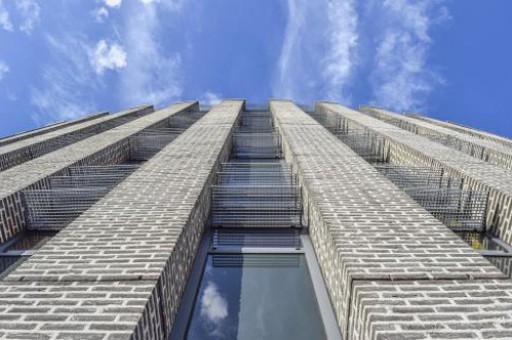基于JavaSwing坦克大战游戏的设计和实现
680
2025-04-01

物体检测YOLOv3实践
物体检测是计算机视觉中的一个重要的研究领域,在人流检测,行人跟踪,自动驾驶,医学影像等领域有着广泛的应用。不同于简单的图像分类,物体检测旨在对图像中的目标进行精确识别,包括物体的位置和分类,因此能够应用于更多高层视觉处理的场景。例如在自动驾驶领域,需要辨识摄像头拍摄的图像中的车辆、行人、交通指示牌及其位置,以便进一步根据这些数据决定驾驶策略。本期学习案例,我们将聚焦于YOLO算法,YOLO(You Only Look Once)是一种one-stage物体检测算法。
具体操作步骤:
登陆ModelArts控制台https://www.huaweicloud.com/product/modelarts.html -> 开发环境 -> Notebook -> 创建
名称:任意设置参数:python3-公共资源池-GPU-云硬盘EVS
创建Notebook
可以选择免费的版本,但是免费的要排队哦~
点击提交
创建步骤我就直接省略了,直接启动以及创建好的,初次创建只要选择好GPU一般都不会出现什么问题,如果选择cpu可能会出现内存耗尽的问题,所以建议选择GPU~
点击‘new’选择 ’tensorflow-1.13.1’
数据和代码下载
运行下面代码,进行数据和代码的下载和解压
本案例使用coco数据,共80个类别。
import os from modelarts.session import Session sess = Session() if sess.region_name == 'cn-north-1': bucket_path="modelarts-labs/notebook/DL_object_detection_yolo/yolov3.tar.gz" elif sess.region_name == 'cn-north-4': bucket_path="modelarts-labs-bj4/notebook/DL_object_detection_yolo/yolov3.tar.gz" else: print("请更换地区到北京一或北京四") if not os.path.exists('./yolo3'): sess.download_data(bucket_path=bucket_path, path="./yolov3.tar.gz") if os.path.exists('./yolov3.tar.gz'): # 解压文件 os.system("tar -xf ./yolov3.tar.gz") # 清理压缩包 os.system("rm -r ./yolov3.tar.gz")
经过上面代码解压的数据文件,如下。
观察下载内容:coco是标注的训练数据文件和一些图片文件;model_data里面是模型参数文件和coco数据的类别文件;yolo3里面是模型源代码;train.py是训练代码,test.jpg用于最后的预测。
准备数据
文件路径定义
from train import get_classes, get_anchors # 数据文件路径 data_path = "./coco/coco_data" # coco类型定义文件存储位置 classes_path = './model_data/coco_classes.txt' # coco数据anchor值文件存储位置 anchors_path = './model_data/yolo_anchors.txt' # coco数据标注信息文件存储位置 annotation_path = './coco/coco_train.txt' # 预训练权重文件存储位置 weights_path = "./model_data/yolo.h5" # 模型文件存储位置 save_path = "./result/models/" classes = get_classes(classes_path) anchors = get_anchors(anchors_path) # 获取类型数量和anchor数量变量 num_classes = len(classes) num_anchors = len(anchors)
Using TensorFlow backend.
读取标注数据
import numpy as np # 训练集与验证集划分比例 val_split = 0.1 with open(annotation_path) as f: lines = f.readlines() np.random.seed(10101) np.random.shuffle(lines) np.random.seed(None) num_val = int(len(lines)*val_split) num_train = len(lines) - num_val
数据读取函数,构建数据生成器。每次读取一个批次的数据至内存训练,并做数据增强。
def data_generator(annotation_lines, batch_size, input_shape, data_path,anchors, num_classes): n = len(annotation_lines) i = 0 while True: image_data = [] box_data = [] for b in range(batch_size): if i==0: np.random.shuffle(annotation_lines) image, box = get_random_data(annotation_lines[i], input_shape, data_path,random=True) # 随机挑选一个批次的数据 image_data.append(image) box_data.append(box) i = (i+1) % n image_data = np.array(image_data) box_data = np.array(box_data) y_true = preprocess_true_boxes(box_data, input_shape, anchors, num_classes) # 对标注框预处理,过滤异常标注框 yield [image_data, *y_true], np.zeros(batch_size) def data_generator_wrapper(annotation_lines, batch_size, input_shape, data_path,anchors, num_classes): n = len(annotation_lines) if n==0 or batch_size<=0: return None return data_generator(annotation_lines, batch_size, input_shape, data_path,anchors, num_classes)
模型训练
本案例使用Keras深度学习框架搭建YOLOv3神经网络。
可以进入相应的文件夹路径查看源码实现。
构建神经网络
可以在./yolo3/model.py文件中查看细节
import keras.backend as K from yolo3.model import preprocess_true_boxes, yolo_body, yolo_loss from keras.layers import Input, Lambda from keras.models import Model # 初始化session K.clear_session() # 图像输入尺寸 input_shape = (416, 416) image_input = Input(shape=(None, None, 3)) h, w = input_shape # 设置多尺度检测的下采样尺寸 y_true = [Input(shape=(h//{0:32, 1:16, 2:8}[l], w//{0:32, 1:16, 2:8}[l], num_anchors//3, num_classes+5)) for l in range(3)] # 构建YOLO模型结构 model_body = yolo_body(image_input, num_anchors//3, num_classes) # 将YOLO权重文件加载进来,如果希望不加载预训练权重,从头开始训练的话,可以删除这句代码 model_body.load_weights(weights_path, by_name=True, skip_mismatch=True) # 定义YOLO损失函数 model_loss = Lambda(yolo_loss, output_shape=(1,), name='yolo_loss', arguments={'anchors': anchors, 'num_classes': num_classes, 'ignore_thresh': 0.5})([*model_body.output, *y_true]) # 构建Model,为训练做准备 model = Model([model_body.input, *y_true], model_loss)
WARNING:tensorflow:From /home/ma-user/anaconda3/envs/TensorFlow-1.13.1/lib/python3.6/site-packages/tensorflow/python/framework/op_def_library.py:263: colocate_with (from tensorflow.python.framework.ops) is deprecated and will be removed in a future version. Instructions for updating: Colocations handled automatically by placer.
# 打印模型各层结构 model.summary()
训练回调函数定义
from keras.callbacks import ReduceLROnPlateau, EarlyStopping # 定义回调方法 reduce_lr = ReduceLROnPlateau(monitor='val_loss', factor=0.1, patience=3, verbose=1) # 学习率衰减策略 early_stopping = EarlyStopping(monitor='val_loss', min_delta=0, patience=10, verbose=1) # 早停策略
开始训练
from keras.optimizers import Adam from yolo3.utils import get_random_data # 设置所有的层可训练 for i in range(len(model.layers)): model.layers[i].trainable = True # 选择Adam优化器,设置学习率 learning_rate = 1e-4 model.compile(optimizer=Adam(lr=learning_rate), loss={'yolo_loss': lambda y_true, y_pred: y_pred}) # 设置批大小和训练轮数 batch_size = 16 max_epochs = 2 print('Train on {} samples, val on {} samples, with batch size {}.'.format(num_train, num_val, batch_size)) # 开始训练 model.fit_generator(data_generator_wrapper(lines[:num_train], batch_size, input_shape, data_path,anchors, num_classes), steps_per_epoch=max(1, num_train//batch_size), validation_data=data_generator_wrapper(lines[num_train:], batch_size, input_shape, data_path,anchors, num_classes), validation_steps=max(1, num_val//batch_size), epochs=max_epochs, initial_epoch=0, callbacks=[reduce_lr, early_stopping])
Train on 179 samples, val on 19 samples, with batch size 16. Epoch 1/2 11/11 [==============================] - 29s 3s/step - loss: 46.9689 - val_loss: 45.4452 Epoch 2/2 11/11 [==============================] - 5s 437ms/step - loss: 45.4349 - val_loss: 45.0633
保存模型
import os os.makedirs(save_path) # 保存模型 model.save_weights(os.path.join(save_path, 'trained_weights_final.h5'))
模型测试
打开一张测试图片
from PIL import Image import numpy as np # 测试文件路径 test_file_path = './test.jpg' # 打开测试文件 image = Image.open(test_file_path) image_ori = np.array(image) image_ori.shape
(640, 481, 3)
图片预处理
from yolo3.utils import letterbox_image new_image_size = (image.width - (image.width % 32), image.height - (image.height % 32)) boxed_image = letterbox_image(image, new_image_size) image_data = np.array(boxed_image, dtype='float32') image_data /= 255. image_data = np.expand_dims(image_data, 0) image_data.shape
(1, 640, 480, 3)
import keras.backend as K sess = K.get_session()
构建模型
from yolo3.model import yolo_body from keras.layers import Input # coco数据anchor值文件存储位置 anchor_path = "./model_data/yolo_anchors.txt" with open(anchor_path) as f: anchors = f.readline() anchors = [float(x) for x in anchors.split(',')] anchors = np.array(anchors).reshape(-1, 2) yolo_model = yolo_body(Input(shape=(None,None,3)), len(anchors)//3, num_classes)

加载模型权重,或将模型路径替换成上一步训练得出的模型路径
# 模型权重存储路径 weights_path = "./model_data/yolo.h5" yolo_model.load_weights(weights_path)
定义IOU以及score:
IOU: 将交并比大于IOU的边界框作为冗余框去除
score:将预测分数大于score的边界框筛选出来
iou = 0.45 score = 0.8
构建输出[boxes, scores, classes]
from yolo3.model import yolo_eval input_image_shape = K.placeholder(shape=(2, )) boxes, scores, classes = yolo_eval( yolo_model.output, anchors, num_classes, input_image_shape, score_threshold=score, iou_threshold=iou)
进行预测
out_boxes, out_scores, out_classes = sess.run( [boxes, scores, classes], feed_dict={ yolo_model.input: image_data, input_image_shape: [image.size[1], image.size[0]], K.learning_phase(): 0 })
class_coco = get_classes(classes_path) out_coco = [] for i in out_classes: out_coco.append(class_coco[i])
print(out_boxes) print(out_scores) print(out_coco)
[[152.6994 166.27255 649.0503 459.93747 ] [ 68.62152 21.843102 465.6621 452.6878 ]] [0.9838943 0.999688 ] ['person', 'umbrella']
将预测结果绘制在图片上
from PIL import Image, ImageFont, ImageDraw font = ImageFont.truetype(font='font/FiraMono-Medium.otf', size=np.floor(3e-2 * image.size[1] + 0.5).astype('int32')) thickness = (image.size[0] + image.size[1]) // 300 for i, c in reversed(list(enumerate(out_coco))): predicted_class = c box = out_boxes[i] score = out_scores[i] label = '{} {:.2f}'.format(predicted_class, score) draw = ImageDraw.Draw(image) label_size = draw.textsize(label, font) top, left, bottom, right = box top = max(0, np.floor(top + 0.5).astype('int32')) left = max(0, np.floor(left + 0.5).astype('int32')) bottom = min(image.size[1], np.floor(bottom + 0.5).astype('int32')) right = min(image.size[0], np.floor(right + 0.5).astype('int32')) print(label, (left, top), (right, bottom)) if top - label_size[1] >= 0: text_origin = np.array([left, top - label_size[1]]) else: text_origin = np.array([left, top + 1]) for i in range(thickness): draw.rectangle( [left + i, top + i, right - i, bottom - i], outline=225) draw.rectangle( [tuple(text_origin), tuple(text_origin + label_size)], fill=225) draw.text(text_origin, label, fill=(0, 0, 0), font=font) del draw
umbrella 1.00 (22, 69) (453, 466) person 0.98 (166, 153) (460, 640)
image
结果如图
华为云AI项目赛事相关项目以及活动,流程基本都是相似的,具体还是要用项目练手,练手资源华为云官方
https://github.com/IamWWT/ModelArts-Lab
AI 图像处理
版权声明:本文内容由网络用户投稿,版权归原作者所有,本站不拥有其著作权,亦不承担相应法律责任。如果您发现本站中有涉嫌抄袭或描述失实的内容,请联系我们jiasou666@gmail.com 处理,核实后本网站将在24小时内删除侵权内容。
版权声明:本文内容由网络用户投稿,版权归原作者所有,本站不拥有其著作权,亦不承担相应法律责任。如果您发现本站中有涉嫌抄袭或描述失实的内容,请联系我们jiasou666@gmail.com 处理,核实后本网站将在24小时内删除侵权内容。